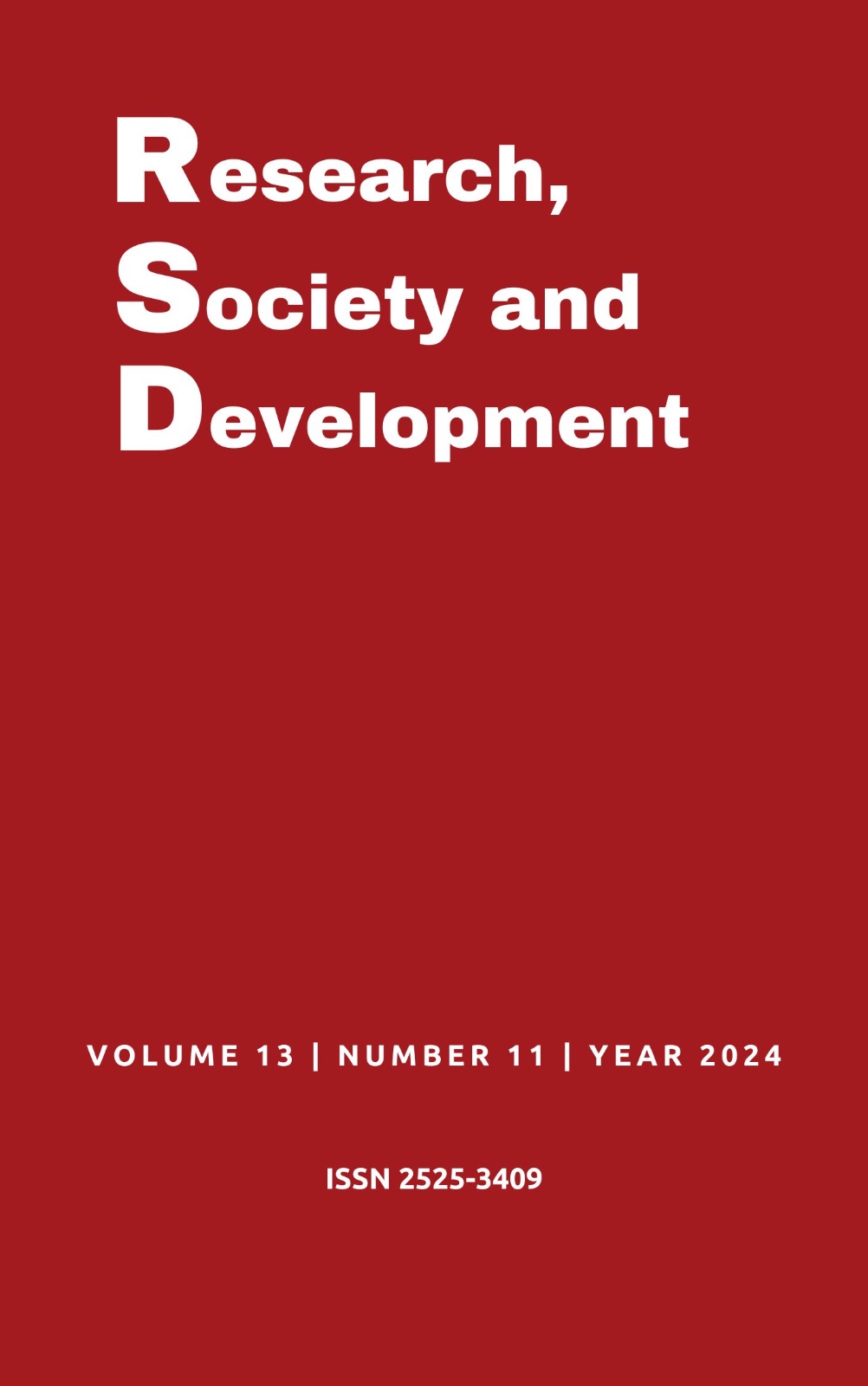Autogenous dental transplantation: A viable alternative today
DOI:
https://doi.org/10.33448/rsd-v13i11.47445Keywords:
Autologous transplantation, Oral surgery, Oral rehabilitation.Abstract
Autologous dental transplantation is a surgical procedure that involves the transfer of a tooth, or part of a tooth, from one position to another in the same individual. This type of transplantation has a long history, dating back to ancient times, when doctors at the time made primitive attempts to replace teeth. Nowadays, autologous dental transplantation plays an important role in tooth replacement, especially in cases of dental trauma or agenesis of permanent teeth. The objective of this study is to analyze, through a narrative review, pertinent information about autologous dental transplantation, emphasizing the indications, techniques, and presenting the advantages of this transplantation in the face of early tooth loss. Therefore, analyses were carried out of scientific articles in the Scientific Electronic Library (Scielo) and PubMed platforms considered important for the chosen topic. Autologous dental transplantation is justified by the need to replace teeth in cases of traumatic loss or congenital absence. The importance of this technique lies in the fact that it offers a highly predictable and long-lasting treatment option for patients who require oral rehabilitation. Furthermore, autologous dental transplantation allows the preservation of bone tissue and the maintenance of aesthetics and masticatory function, contributing significantly to the quality of life of individuals undergoing the procedure. It is concluded that autologous dental transplantation is a viable and effective technique for tooth replacement in several cases, with the potential to offer long-lasting and satisfactory results.
References
Batista, M. J., Rihs, L. B., & Sousa, M. L. R. (2012). Risk indicators for tooth loss in adult workers. Brazilian Oral Research. 26(5):390-396.
Barbato, P. R., Nagano, H. C. M., Zanchet, F. N., Boing, A. F., & Peres, M. A. (2007). Perdas dentárias e fatores sociais, demográficos e de serviços associados em adultos brasileiros: uma análise dos dados do Estudo Epidemiológico Nacional (Projeto SB Brasil 2002-2003). Cadernos de Saúde Pública, 23(8), 1803–1814. https://doi.org/10.1590/s0102-311x2007000800007.
Cavalcante, L. T. C. & Oliveira, A. A. S. (2020). Métodos de revisão bibliográfica nos estudos científicos. Psicol. Rev. 26(1). https://doi.org/10.5752/P.1678-9563.2020v26n1p82-100.
Casarin, S. T. et al. (2020). Tipos de revisão de literatura: considerações das editoras do Journal of Nursing and Health. Journal of Nursing and Health. 10(5). https://periodicos.ufpel.edu.br/index.php/enfermagem/article/view/19924.
Conci, R. A. et al. (2011). Transplante Dental - Relato de um caso clínico. RFO UPF. Passo Fundo, 16(3), 322-326, set./dez. ISSN 1413-4012.
Costa, A. da S., Silva, C. F. da, Frank, D., Moraes, N. C. V. de, Rodrigues, T. K. A., Pacheco, A. de B. N. D., & Cavazana, T. P. (2021). Tratamento Restaurador Atraumático: Técnica Minimamente Invasiva para Lesões de Cárie na Primeira Infância. Archives of Health Investigation, 11(2), 297–303. https://doi.org/10.21270/archi.v11i2.5591
Cuffari, L., Palumbo, M. (1997). Transplante de germe do terceiro molar. Jornal Brasileiro Odontologia Clínica. 1(2):23-27.
Giancristófaro, M., et al. (2009). Transplante Dental: Revisão Da Literatura E Relato De Caso. Rev. de Odontologia da Universidade Cidade de São Paulo. 21(1): 8-74.
Kallu, R. et al. (2005). Tooth Transplantations: A Descriptive Retrospective Study. International journal of oral and maxillofacial surgery, 34(7): 745-755.
Lima, A. L. D., Leite, M. O., Santos, M. V. (2024). Transplante dental autógeno como alternativa para o tratamento de dentes considerados perdidos, uma revisão de literatura. Revista Ciências Da Saúde CEUMA, 2(2), 26–41. https://doi.org/10.61695/rcs.v2i2.38.
Marzola, C. (2008). Fundamentos de Cirurgia e Traumatologia Buco Maxilo Facial. São Paulo: Ed. Big Forms, v. 6.
Miloro, M., Ghali, G. E., Larsen, P., Waite, P. (2012). Princípios de Cirurgia Bucomaxilofacial de Peterson. 3 ed. São Paulo: Santos Editora.
Rebouças, D. S., et al. (2015). Autotransplante dentário: uma opção reabilitadora e viável ao sus. Revista Bahiana de Odontologia, 6(1): 47-51.
Resende, A. F. D. B. et al. (2017). Transplante dentário autólogo realizado no mesmo paciente em etapas diferentes do seu desenvolvimento. Rev. Cirurgia e Traumatologia Buco-Maxilo-Facial. Camaragibe, 17(4), 12-16, out./dez. 2017. ISSN 1808-5210 online.
Richardson, R. (2006). Human dissection and organ donation: a historical and social background. Mortality. [England], 11(2), may.
Rother, E. T. (2007). Revisão sistemática X revisão narrativa. Acta Paulista De Enfermagem. 20 (2), v–vi. https://doi.org/10.1590/S0103-21002007000200001
Schutz. Silvio. et al. (2013). Results after wisdom tooth transplantation. A retrospective study. Rivista Mensile Svizzera di Odontologia e Stomatologia. 123(4), 303-13.
Singh, A. K., Khanal, N., Acharya, N., Hasan, M. R., Saito, T. (2022). What Are the Complications, Success and Survival Rates for Autotransplanted Teeth? An Overview of Systematic Reviews and Metanalyses. Healthcare, [S.L.], 10(5), 1-13, 1 maio. MDPI AG.
Downloads
Published
Issue
Section
License
Copyright (c) 2024 Ana Luiza Fernandes Guimarães; Matheus Costa Menezes; Ricardo Kiyoshi Yamashita

This work is licensed under a Creative Commons Attribution 4.0 International License.
Authors who publish with this journal agree to the following terms:
1) Authors retain copyright and grant the journal right of first publication with the work simultaneously licensed under a Creative Commons Attribution License that allows others to share the work with an acknowledgement of the work's authorship and initial publication in this journal.
2) Authors are able to enter into separate, additional contractual arrangements for the non-exclusive distribution of the journal's published version of the work (e.g., post it to an institutional repository or publish it in a book), with an acknowledgement of its initial publication in this journal.
3) Authors are permitted and encouraged to post their work online (e.g., in institutional repositories or on their website) prior to and during the submission process, as it can lead to productive exchanges, as well as earlier and greater citation of published work.


